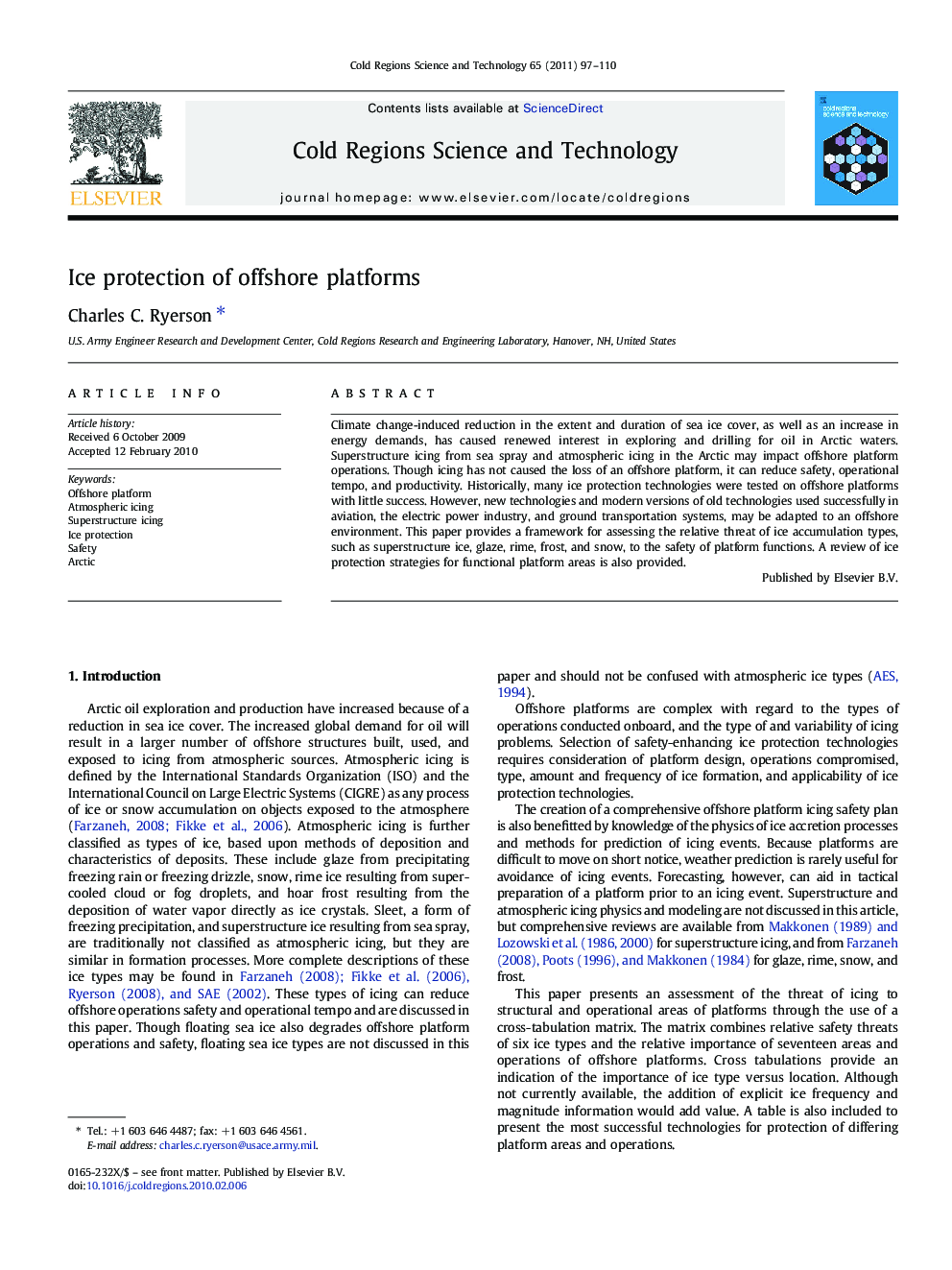| Article ID | Journal | Published Year | Pages | File Type |
|---|---|---|---|---|
| 4676091 | Cold Regions Science and Technology | 2011 | 14 Pages |
Climate change-induced reduction in the extent and duration of sea ice cover, as well as an increase in energy demands, has caused renewed interest in exploring and drilling for oil in Arctic waters. Superstructure icing from sea spray and atmospheric icing in the Arctic may impact offshore platform operations. Though icing has not caused the loss of an offshore platform, it can reduce safety, operational tempo, and productivity. Historically, many ice protection technologies were tested on offshore platforms with little success. However, new technologies and modern versions of old technologies used successfully in aviation, the electric power industry, and ground transportation systems, may be adapted to an offshore environment. This paper provides a framework for assessing the relative threat of ice accumulation types, such as superstructure ice, glaze, rime, frost, and snow, to the safety of platform functions. A review of ice protection strategies for functional platform areas is also provided.
